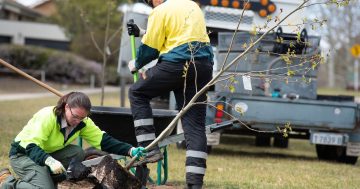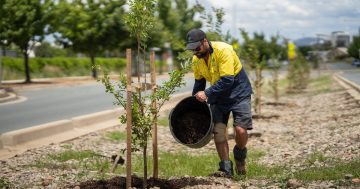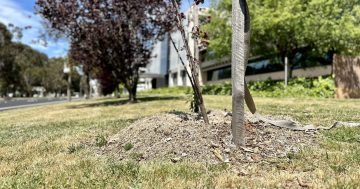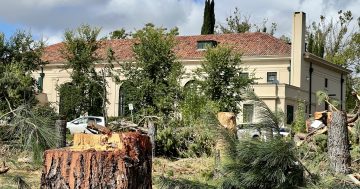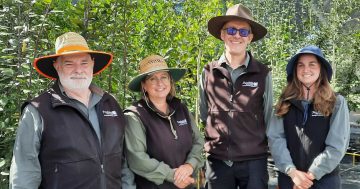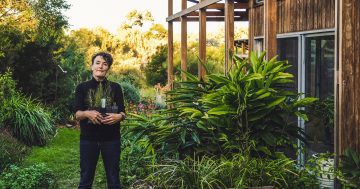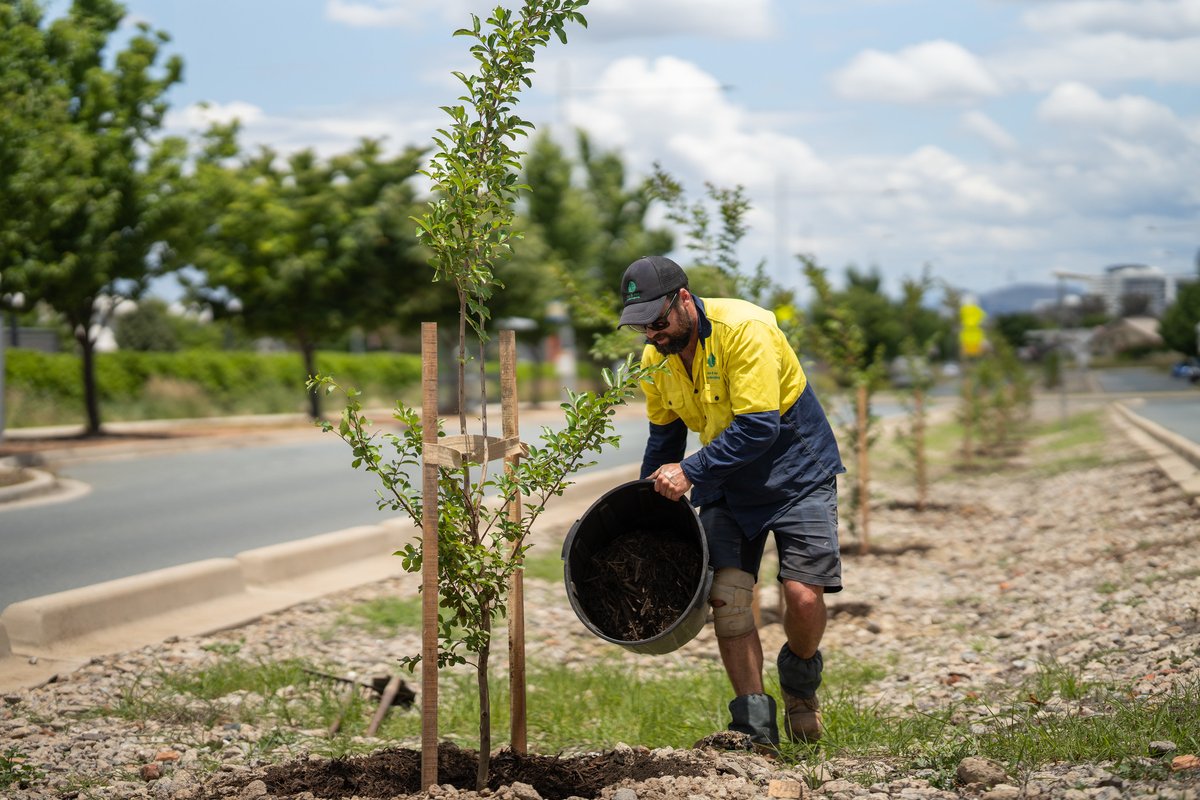
The government has committed to increasing Canberra’s tree canopy coverage to above 30 per cent by 2045. Photo: ACT Government.
Efforts to combat urban heat islands and increase tree canopy coverage in Canberra appear to be on track, with more than 64,000 trees to be planted by the middle of next year.
That’s 10,000 more than the 54,000 trees promised at the last election, according to the ACT Government’s annual tree report.
Transport and City Services Minister Chris Steel said more trees being established in the suburbs and city would increase Canberra’s resilience to the impacts of climate change.
“This is the fifth large tree planting that’s occurred in our city’s history, with the new stock set to grow canopy cover across our city, especially in new and emerging suburbs built after 1990,” he said.
“As well as tree planting, the ACT Government has made investments in the budget in more tree maintenance staff to manage our large and ageing urban forest.”
According to the report, a total of 12,650 street trees and trees in open space were planted in 2022-23, and 14,559 were planted on unleased land.
Another 20,000 are expected to be planted in 2024.
The government has set a target for Canberra to have 30 per cent canopy cover, or equivalent, by 2045.
A measure of the city-wide canopy cover was last undertaken in 2020, which estimated coverage of 22.5 per cent. It’s measured by LiDAR data, which is the scientific standard in determining tree coverage across Canberra’s urban footprint.
Suburbs with the highest levels of tree canopy cover, with coverage above the 30 per cent target, include Isaacs, Reid, Aranda, Cook, Forrest, Deakin, Garran, Braddon and Weetangera.
The report noted older suburbs are more likely to have higher canopy cover as the blocks and road verges are larger and trees more established.
However, a “significant” number of these trees will reach the end of their useful life expectancy in the coming decades.
Newer suburbs like Wright, Coombs and Throsby have very low levels of canopy cover as the trees are still young.
“Failed juvenile trees are replaced as required, and any additional available planting sites are being populated to ensure the maximum canopy potential is establishing,” the report noted.
“Alternative location-specific solutions such as living infrastructure (green roofs, for example) will also help contribute to newer suburbs where planting sites are limited, particularly on leased land.”
Overall, 26 Canberra suburbs have a tree canopy coverage higher than the 30 per cent target, while another 57 have coverage between 20 and 30 per cent (of 120 suburbs).
LiDAR data is updated every five years to determine the success of the tree planting program and urban forestry policies.
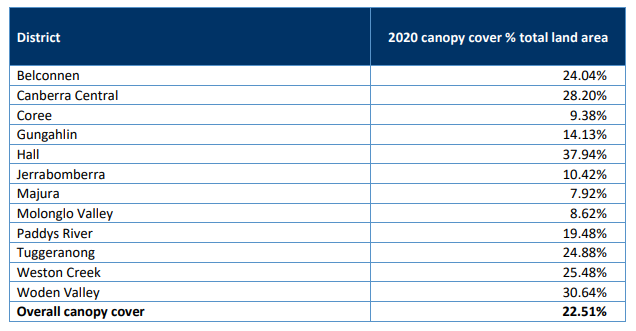
District tree canopy cover by a percentage of the total land area as of 2020. Image: Urban Tree Canopy Coverage Report 2023.
Many of the newer trees found their homes thanks to suggestions from the public, with City Presentation executive branch manager Daniel Iglesias stating that “thousands” had been planted after the community got in touch online.
He explained a lot of planning went into the planting program, determining not just the location but also the species that would be suitable for the area, and making sure they wouldn’t impact existing services both above and below ground.
Mr Iglesias admitted the directorate didn’t always get it right but appreciated community feedback if something had been inappropriately planted.
“In a very small amount of cases, we have made some unfortunate decisions about tree species, whether that’s, for example, trees being planted in grassland areas – which are naturally treeless areas – or whether it’s a species that could in the future become a problem,” he said.
“We’ve made mistakes in the past, but I think the important thing to realise is, within the context of all our planning team, they’re a very small fraction, and we’re keen to get it right.”
New laws to protect Canberra’s trees are set to begin next year.
The introduction of the Urban Forest Act 2023 and Urban Forest Strategy will mean all trees planted on public land, as well as trees that are 8 metres or taller on leased land, will be protected for the first time.
“The combination of more plantings, improved maintenance and protection of existing trees will ensure that our city’s trees provide lasting benefits to generations of Canberra families,” Mr Steel said.
Information sessions for industry and the community would be held throughout November to provide an overview of the new tree laws.













